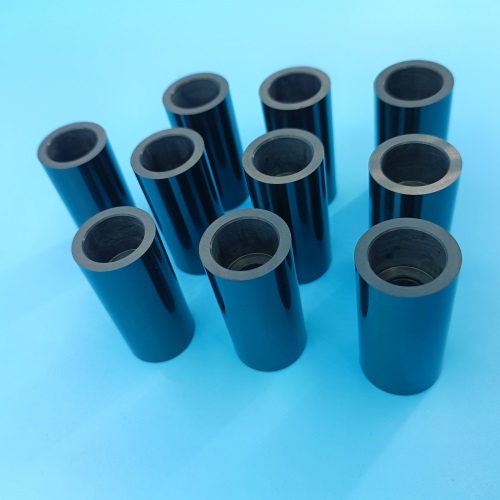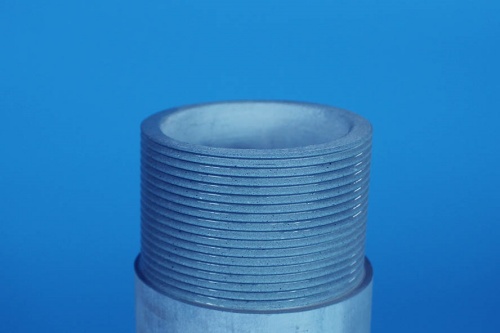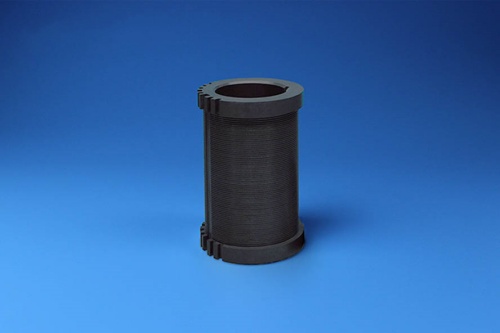실리콘 질화물 세라믹의 유전 상수
Basic concepts of dielectric constant
The dielectric constant is a physical quantity that describes the ability of a material to store electrical energy in an electric field, typically represented by the symbol \ (\ varepsilon-r ). It reflects the polarization ability of the material relative to vacuum. The higher the dielectric constant, the greater the polarization degree of the material in the electric field, and the more stored electrical energy.

The dielectric constant range of silicon nitride ceramics
The dielectric constant of silicon nitride ceramics varies depending on the preparation process, microstructure, and testing conditions. Generally speaking, the dielectric constant of silicon nitride ceramics is around 7.8 to 10. For example:
-At a frequency of 1 MHz, the dielectric constant of silicon nitride ceramics is typically 8.2 to 9.5.
-Porous silicon nitride ceramics prepared using specific processes can have a dielectric constant as low as 3.5 to 4.6.
-The low dielectric constant silicon nitride ceramics prepared by adding pore forming agents can further reduce their dielectric constant.

Factors affecting the dielectric constant of silicon nitride ceramics
- 마이크로 구조
-Crystal phase composition: Silicon nitride ceramics are mainly composed of two crystal phases, α – Si ∝ N ₄ and β – Si ∝ N ₄, with the α phase having a relatively low dielectric constant and the β phase having a higher dielectric constant.
-Pore rate: The presence of pores reduces the dielectric constant of silicon nitride ceramics. The higher the porosity, the lower the dielectric constant. For example, porous silicon nitride ceramics with porosity ranging from 30% to 55% have a dielectric constant of only 3.5 to 4.6.
-Grain size: An increase in grain size typically leads to an increase in dielectric constant. - 준비 과정
-Sintering temperature: A higher sintering temperature helps to densify, thereby increasing the dielectric constant.
-Additives: Adding sintering aids such as rare earth oxides can affect the microstructure and dielectric properties of silicon nitride ceramics. For example, adding a small amount of rare earth oxide can reduce lattice oxygen defects and improve thermal conductivity, but its effect on the dielectric constant is more complex. - Testing conditions
-Frequency: The dielectric constant usually decreases with increasing test frequency. Under high-frequency conditions, the dielectric constant of silicon nitride ceramics may significantly decrease.
-Temperature: At high temperatures, the dielectric constant of silicon nitride ceramics may change, depending on the material’s thermal stability and microstructure.

The application significance of dielectric constant of silicon nitride ceramics
The dielectric constant of silicon nitride ceramics is of great significance in multiple fields:
- Electronic devices: The high dielectric constant of silicon nitride ceramics gives them excellent insulation properties in high-frequency electronic devices and can be used to manufacture high-frequency circuit substrates.
- Antenna cover material: Silicon nitride ceramics with low dielectric constant can be used to manufacture antenna covers for high-speed aircraft, which can meet the requirements of signal penetration and maintain structural strength.
- High temperature environment application: Silicon nitride ceramics can maintain high dielectric properties at high temperatures, making them suitable for high-temperature electronic devices and sensors.
The dielectric constant of 실리콘 질화물 세라믹 is an important material performance parameter with a wide range of values, significantly influenced by microstructure, preparation process, and testing conditions. By optimizing the preparation process and microstructure design, the dielectric constant of silicon nitride ceramics can be controlled to meet the needs of different application scenarios.
